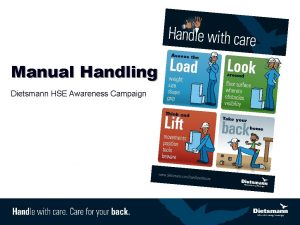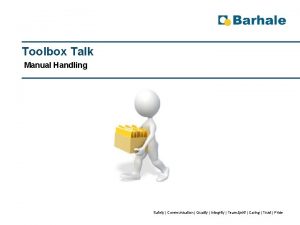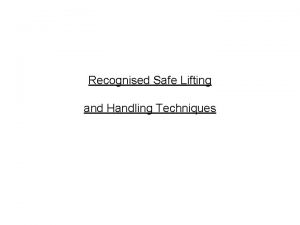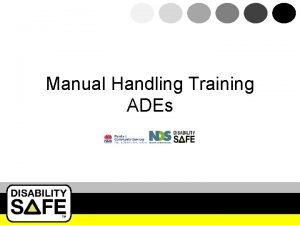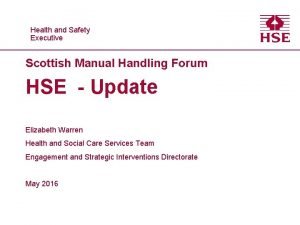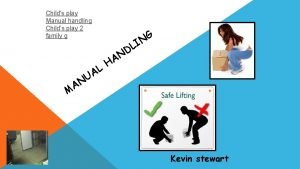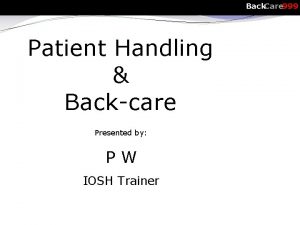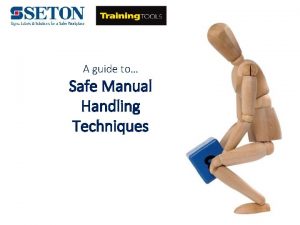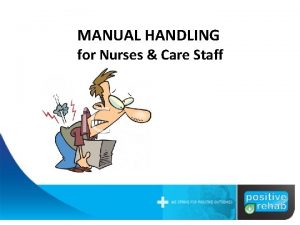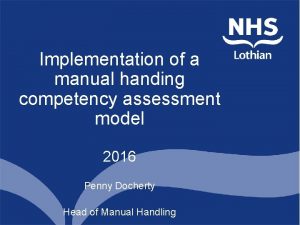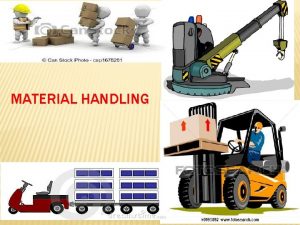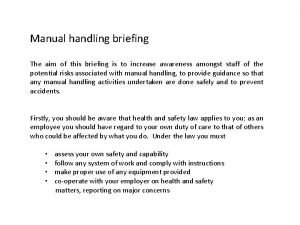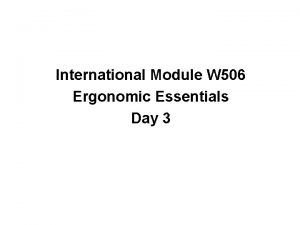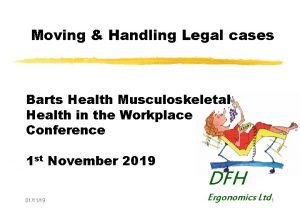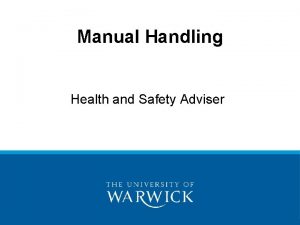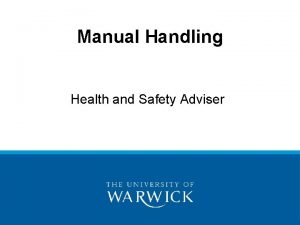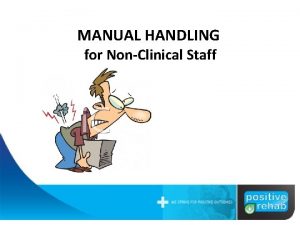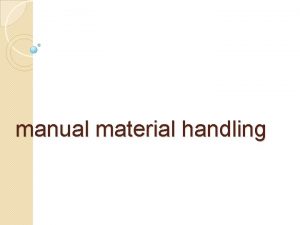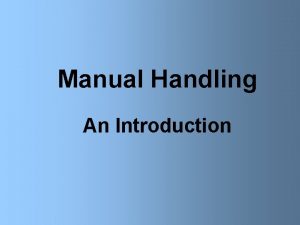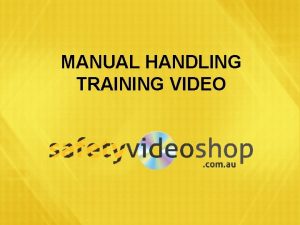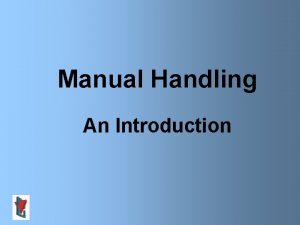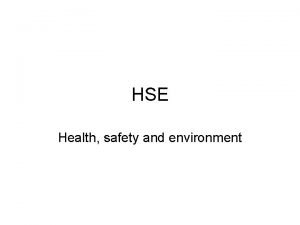Manual Handling Dietsmann HSE Awareness Campaign Let Safety



















- Slides: 19

Manual Handling Dietsmann HSE Awareness Campaign

Let Safety be your Guideline! • Prevent fatigue, prevent injuries, prevent accidents • Handling: take care of your spine, muscles and hands • Prevent risk of musculoskeletal disorders (MSD)

You need your hands! • Be aware of every risk • Wear protection: gloves • Always remember: hygiene

You need your back too! • Main handling principles • Basic rules of manual handling • Identify risk situations

Manual handling: 3 main steps

Manual handling: about your back cervical vertebrae: neck and head movements dorsal vertebrae: connected to ribs, risk of trauma (shock, drop etc. ) lumbar vertebrae: flexion, extension, rotation & support: risk of overload and permanent damage

Manual handling: risks for your back • short term: • acute back injury from unique event (i. e. lifting too heavy, or in bad position) • long term: • chronic fragility/vulnerability of column • invalidity from back pain • great impact on your personal, professional and social life

• When handling materials, with or without mechanical assistance. . . • be alert at all times to prevent accidents and injuries!

Don’t lift an excessively heavy load • Determine the weight • Too heavy? Get help or use mechanical devices!

Don’t lift a load that is too large to handle • Determine the size • Too big? Get help or use mechanical devices!

Lift a load only if you can get a firm grip • Assess shape and grips • Can’t hold it? Get help or use mechanical devices!

Look around you: assess the location • Where are you going • Can you get there safely? • Anything elso going on?

Check the floor surface • Risks of falling? • Risks of stumbling? • Risks of slipping?

Check around you! • Any obstacles on the floor? • Or on the ceiling? • Or swinging around?

Make sure you can see what you’re doing! • Bad lighting? • Heavy shadow? • Anything else blocking your view?

When lifting an object: • Squatting position, back erect • Raise the object straightening the legs • Using leg muscles to take strain off your back

When lifting an object: • Avoid lifting and turning at the same time • Also, avoid jerking when pulling or lifting

When moving an object: • Take advantage of skids, hoists, bars, jacks, blocking or rollers when moving heavy material

Whatever you are lifting or moving: • Use appropriate personal protective equipment • Take special precautions when handling chemicals and hazardous materials
 Manual handling campaign
Manual handling campaign Maintenance rules
Maintenance rules Dietsmann cv
Dietsmann cv Manual handling tool box talk
Manual handling tool box talk Let me let me let me
Let me let me let me Cvs privacy awareness and hipaa privacy training
Cvs privacy awareness and hipaa privacy training What do the principles of manual handling help you to do
What do the principles of manual handling help you to do Kinetic lifting steps
Kinetic lifting steps Lunge position manual handling
Lunge position manual handling Scottish manual handling forum
Scottish manual handling forum Child's play manual handling
Child's play manual handling The orthodox lift is:
The orthodox lift is: Manual handling positions
Manual handling positions Iata airport handling manual
Iata airport handling manual Lunge position manual handling
Lunge position manual handling Moving and handling competency assessment template
Moving and handling competency assessment template Material handling means
Material handling means Aim of manual handling
Aim of manual handling W 506
W 506 Litee manual handling
Litee manual handling
